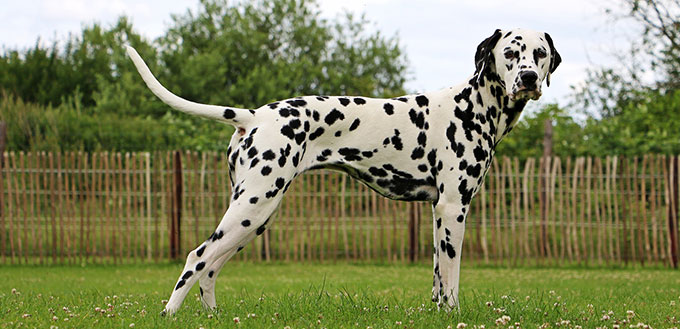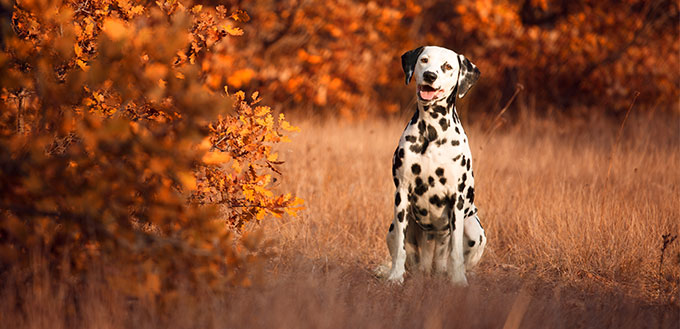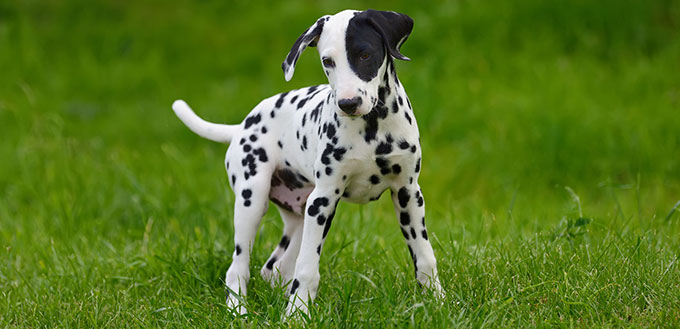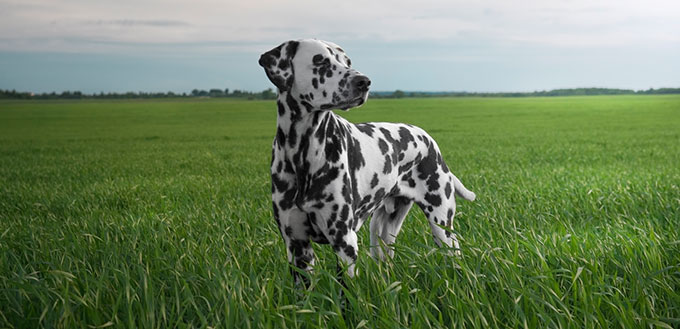You might have heard about the dalmatian dog from the famous animation and might be fantasizing about having one as a pet. Well, there is more to the breed than what is portrayed in the film that will be useful to any owner. Before getting any pet, it is recommended to gather as much information as you can to make the companionship a healthy one. The dalmatian dog is not a rare breed and is popular among families and dog enthusiasts. The dalmatian breed is one of the medium-sized breeds of dogs unique for its liver-spotted black coat. The dog has a square outline at the side view and rounded feet. There are quite a lot of questions to be answered concerning the breed, and some of them will be examined in this article. Things like their health, nutrition, training, grooming, and general care will be discussed to paint a clear picture of what living with the dog will look like. By the end, you will be in a better place to determine if this dog will match your lifestyle and make a great pet.

History of the Dalmatian Dog
With many historical sources, the dalmatian dog is known to originate from Croatia. A painting found in Croatia dating 1600 to 1630 is the first illustration of the dog in addition to a fresco. Also, the first documentation of the animal was in the 18th Century and in archives where there were mentions and descriptions of the dog by the church in 1719. In 1739 the dog was also mentioned by Andreas Keczkeméty’s church chronicles. In Thomas Pennant’s book in 1771, he described the dog as originating from Dalmatia and gave it the name Dalmatian. In 1790, Thomas Bewick wrote a book where he also calls the breed a Dalmatian or coach dog. Before then, they were called the spotted dogs, and there were painting of them beside war chariots and horse-drawn carriages. This was during the regency period, where the breed was a status symbol and trotting alongside the wagons. Those with decorative spots were very highly-prized, and the general use of the breed was to guard stables at night. The dalmatian was developed primarily developed in England, and their unofficial standard was introduced in 1882 by an Englishman named Vero Shaw. The first Dalmatian club was formed in 1890, and the standard became official in England. It is their unique coat that got them accessible across Europe, and the demand for them increased.
Quick Facts About The Dalmatian Dog
- They are many nicknamed dog: Because of their unique appearance and great looks, they have earned a lot of names over the years. This is not surprising as they were used for many things and also resembled popular items. They have been called the English Coach dog, the Spotted Coach dog, The Firehouse Dog, and the carriage dog. They have also had rather funny or silly nicknames as well. This includes Plum Pudding dogs because their spots against the white background resemble a traditional spotted desert.
- They were very popular: Currently, the dalmatian is not part of the group of most popular dogs, but they have their fair share of fame. When Dodie Smith released his book ‘The Hundred and One Dalmatians’ in 1956, the love and recognition for the breed shot up. More of the dogs were adopted during the period, and it increased again when the Disney animated movie came out. Unfortunately, the number of abandoned dogs also increased, after owners realized they could not take care of them. Now, a lot of people know Dalmatians just by the name without even owning one.
- They are guard dogs: Dalmatians are guard dogs by instinct and through training, and the skill was sharpened by their work guarding the walls of Dalmatia. These spotted dogs protected the location now known as Croatia, and they have carried the trait from generation to generation. The name is originally from the Illyrian tribe, referred to as the Dalmatae in Greco-Roman times. The breed also traveled with groups of Gypsies and made an appearance in different towns. Due to their skill, they accompanied horses during tour exhibits. They were also highly beneficial to brewing companies that used them to protect expensive horses and beer wagons. At some point, they were used as symbols by the Anheuser-Busch brewing company in addition to horses.
- They were circus dogs: This breed became popular in circuses mostly because they were intelligent, energetic, had high endurance, and a good memory. They were also known to enjoy being in the company of others and so it was a fitting role for them as entertainers. Not only did they have the personality for the part, but they were also pleasing to look at. These characteristics, combined with their natural clown nature, made them a highly patronized act.
- They are natural hunters: Dalmatians have an instinct to hunt smaller animals and so were very useful in ridding spaces of vermin. Their individualistic mentality and high energy made it possible for them to be swift in cornering mice and rats. They enjoyed the sport and will announce their catch to anyone willing to listen. Humans liked them because of this skill and used them whenever they could.

Things You Should Know
Training
Training is a vital process of ensuring your dog grows to be a well-rounded dog and behaves well when around other people. Dalmatian puppies and adults need Respect training more than obedience since they have a dominating character sometimes. It helps you establish who is in control so that you have a cordial relationship with the dog. Training can start at eight weeks old because their minds are fresh, and they are eager to learn. You can start with home training and use praise and dog treats to reinforce good behavior. For starters, you can keep them indoors and, on a leash, so that they do not wander. Socialization is also essential and involves exposing the dog to situations and other dogs or humans to learn the best way to react to them. There are a lot of techniques that are useful in training dalmatians and you must research thoroughly to get the best for yours. Dog trainers can be helpful in this regard, or you can use training schools. Always make rules and try not to break them since changing your mind often can confuse your dog on what is right or wrong. One mistake is to yell, scold, or hit a dalmatian when they are wrong, as this might upset or excite them into more unacceptable behaviors. Use short, straightforward commands so you do not confuse them and if possible, use clicker training. Since the breed used to walk beside carriages, they need a lot of exercises and physical activity to prevent boredom. Lack of stimulation can cause destructive behaviors such as chewing on objects and running around frantically. An hour or two of runs is okay to keep them fit and occupied.
Feeding
Keeping a dalmatian healthy involves feeding them a well-balanced diet that caters to the dietary requirements and is age and size appropriate. One important question to look at is, ‘how big do dalmatians get?’ The answer, as earlier established, is that they are medium-sized dogs that are energetic and will need a diet that complements these characteristics. One of the critical dalmatian facts is that they lack the enzyme that assists in digesting protein. This means that they are at risk of developing protein buildup which can cause small stones called kidney stones to form. The solution is to regulate or limit the amount of foods that have high protein content in their meals. Also, give them plenty of water to help their kidneys flush out these unwanted substances. Dalmatians are also a breed with sensitive stomachs and so pay close attention to what they consume. You can add dry kibble to give them something to chew on which also helps keep their teeth healthy. Avoid artificial additives and preservative which may cause health problems for your dog. Get to know your dog and what makes them react negatively and avoid those foods at all costs. Dalmatian puppies can be fed up to four times a day, while adults will need less food. For a better chance at a healthy lifespan, consult a veterinarian to help with ingredients and portions.
Related Post: Dog Food for Sensitive Stomachs

Grooming
Grooming includes taking care of their teeth, coat, nails, and general physical appearance. When dalmatians are born, they have pure white coats and later develop their spots. Dalmatians try to clean themselves by licking but they do not always get every part of their body. Bathing is one way to keep them clean and can be done every three to six months. It helps to remove dirt and keep the coat smooth and silky. Always use dog shampoo which contains the right ingredients to nourish the dog’s skin. Brushing should be done more frequently and with the right tools. This is a temporary way to keep the coat clean and remove loose hair and tangles. Dalmatians shed a lot and so they should be brushed once or twice a week on their whole body. Nail clipping is another way to groom your pet and it is done naturally when the dog runs around. However, once in a while, you can trim their nails using dog nail cutters which are safe for dogs. Since it can be a tricky process, it is better to get a professional to help. Dalmatians are prone to get cavities and so dental hygiene is paramount. You can clean their teeth at home using dog toothpaste and toothbrush, or visit a professional to get it done.
Related Post: Dog Toothbrushes
Health
Dalmatians usually live for 10 to 13 years, but not without any health issues. During their lifetime, one of the problems they encounter is deafness. The defect cannot be detected at an early age and so the breed is thought to be unintelligent. Now that there is more research into the issue, it has been noted that it is more common in albinos. It is also known as a genetic problem and in albinos, it is mostly due to a lack of mature melanocytes in their inner ear. Blue-eyed Dalmatians are also prone to deafness and so it is not encouraged to breed them. Another health issue in Dalmatians is hip dysplasia where there is an abnormal formation in the hip joints. This can cause severe pain for the dog which can also be crippling. Most of the time, young Dalmatians develop the defect with age due to soft tissue around the joint, not developing properly. It is also genetic and can affect either one or both hip joints. As earlier mentioned, Dalmatians are prone to kidney stones due to a lack of the enzyme that breaks down certain proteins. Also, their lovers have a hard time breaking down Uric acid, which causes a build-up in their blood serum and therefore causing gout. When excreted into the urine in high concentration, it can lead to kidney stones which are not a good sign for the animal. One way to ensure your Dalmatian lives a healthy normal life is to have a veterinarian on standby to give the dog the medical assistance it needs. It is recommended to have regular visits to ensure they are in top shape all the time.
Temperament
Dalmatians are very playful dogs and love attention, but this means they are very energetic and won’t be the best for older people or very young children. These dogs are very loyal once they get comfortable with you and their high intelligence makes them easy to train. In this regard, an important question to answer is, ‘are Dalmatians aggressive? This breed can be aggressive towards other dogs if they are not socialized properly. They can be timed or reserved toward strangers and it will also take training and socialization to fix that. They are known to have excellent memories and will remember how you treat them. Dalmatians are better when with some company and they might be destructive or depressed if left alone. Because of their exercise needs, they need a lot of space and will not do well in apartments or other small, confined homes.

To Summarize
Keeping a pet can be what you need and getting the right one can determine how well your life will be. When it comes to Dalmatians, you must have a lot of time and energy to keep up with them. They are generally low maintenance but it will be better to have regular visits with a vet for a better quality of life. Training them is easy since they are so smart and once they match your personality and lifestyle, you will have the best time with them.
Sources:
- Martha Adams, Why Do Dalmatians Have Spots?, The Nest
- Sara Elliott, Are Dalmatians Good Family Dogs?, HowStuffWorks
- Dalmatian, VCA Hospitals
- Dalmatian, VetStreet






